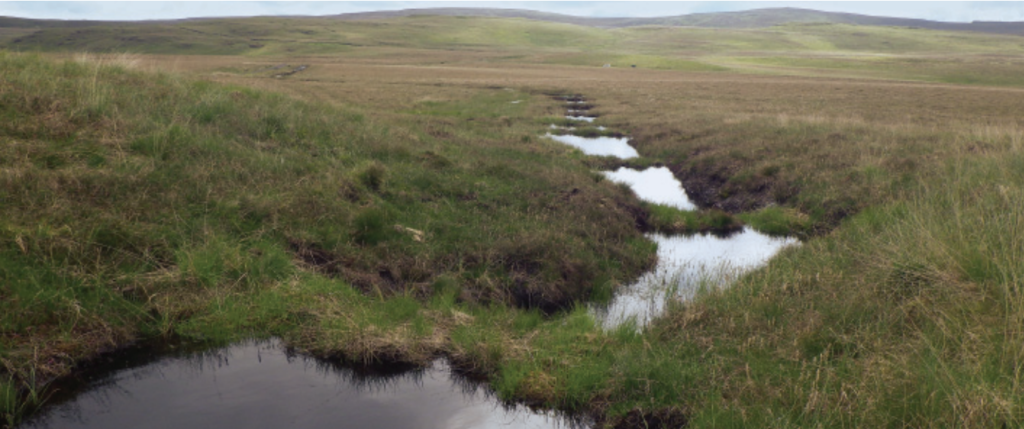18 February 2022
This blog post isn’t necesarily about my work experiences but I thought I’d share some of the things I’ve learnt about how and why peatland restoration takes place at RSPB Dove Stone.
Naturally, sphagnum is widespread on healthy peatbogs but is now restricted to smaller patches. It is the main component for building peat layers and, due to its ability to hold large amounts of water, maintains a moist environment.
Peatland restoration requires a succession of methods, applied at different times, in order to initially mitigate damage, then later working to make the habitat more self-supporting.

For example, before RSPB Dove Stone started managing the site, most of the land at Black Hill summit consisted of bare peat, making the hill’s name very apt.
The peatland vegetation had been eradicated by anthropogenic effects, leaving the area black with bare peat, which would naturally be covered and protected by vegetation. Industrial pollution, burning (both ‘conservation’ burning and wildfires), and digging grips (gullies) has killed off the vegetation, made the environment unhospitable for regrowth and has dried out the peatbog.
Peatbog habitat is formed and maintained in consistently wet conditions over thousands of years (peat depth grows approximately 1 metre per 1,000 years), so the factor of drying out alone is highly detrimental to the habitat and ecosystem.
Bare peat exposed to the elements is highly prone to weathering and erosion, whether it is wet or dry. Water easily flows over the surface at speed, leading to hydraulic action weathering and carving gullies in the process, further perpetuating the problem. Dry peat crumbles and blows away like dust in the wind.

The main process used to restore the peatland is (but not limited to):
1. Revegetation. Initially revegetating the bare peat by applying lime, fertiliser and seed. This provides a fast growing and hardy vegetation layer to protect the peat.
2. Grip and gully blocking with dams. This keeps the water on the hill and stops hydraulic action erosion.
3. Planting sphagnum in areas which are now vegetated and soil conditions are suitably damp. This further raises the water table, maintains soil moisture resilience, and is the primary vegetation involved with peat build-up and carbon sequestration.
In a nutshell, peatland restoration involves revegetating and re-wetting the peatland.
REFERENCES
Moors for the Future – Grip and gully blocking: https://www.moorsforthefuture.org.uk/our-resources/file-preview?id=87430
